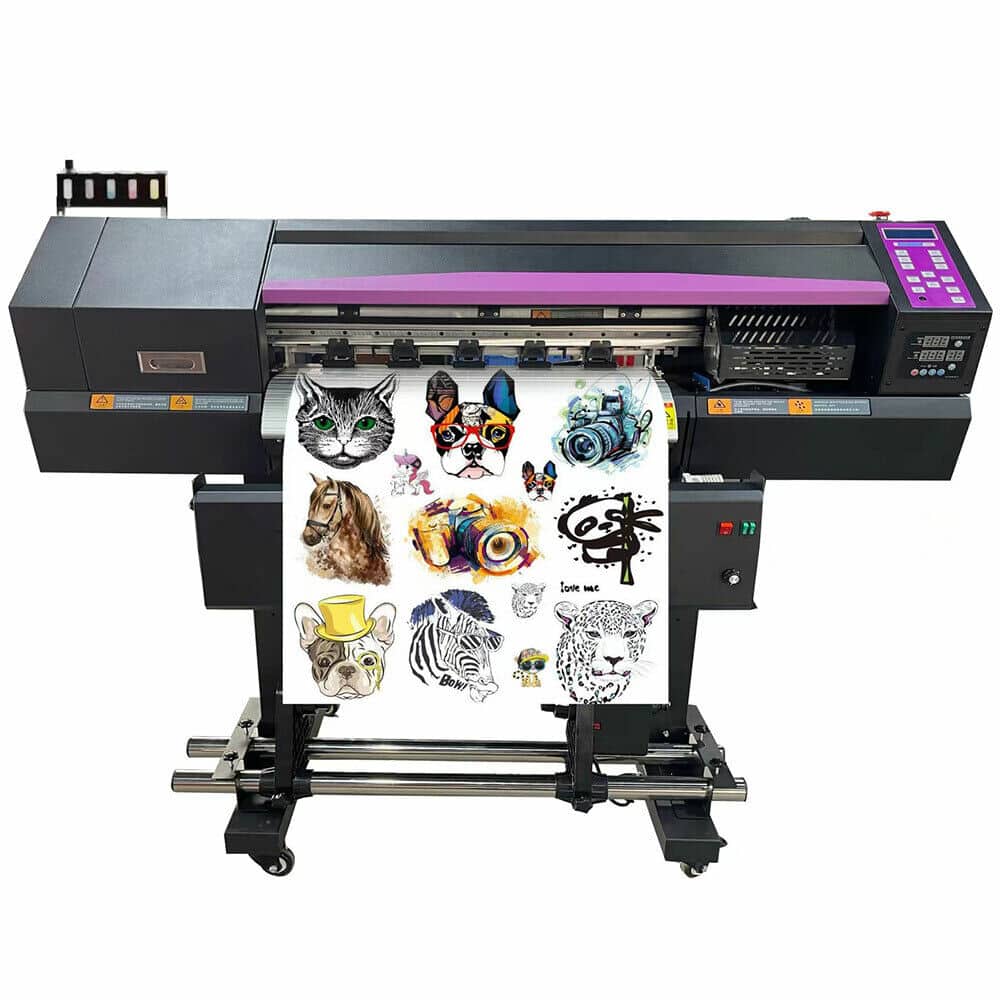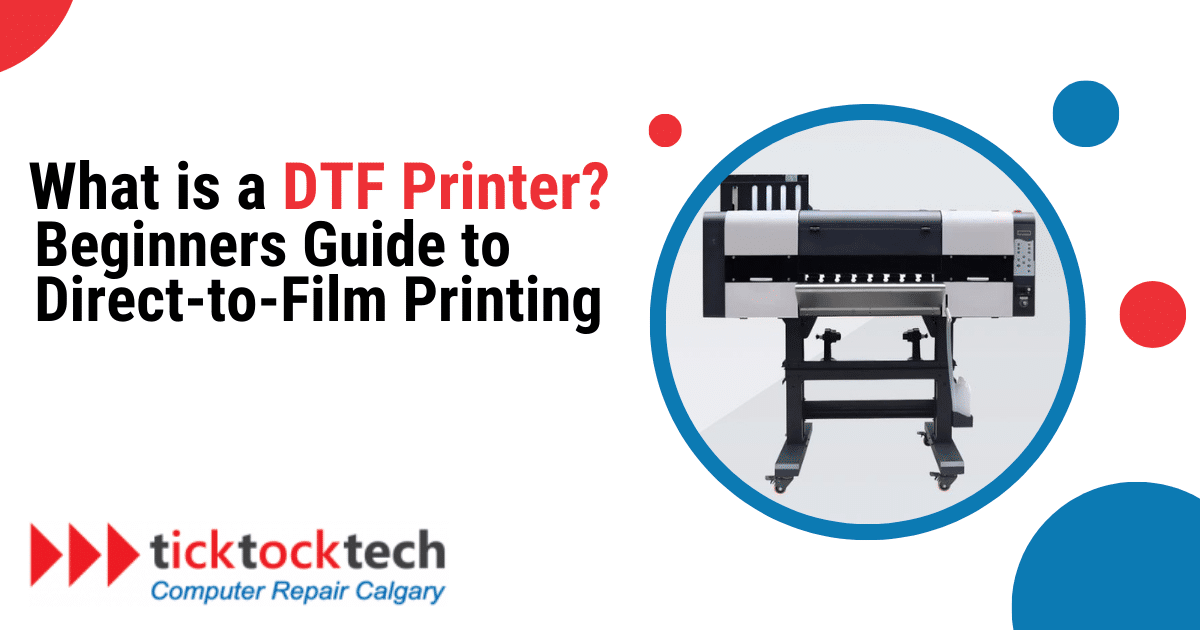ThesePrinting is beyond white paaper printing, or photocopy. One of the not so much spoken about orintrer are the DTF and the DTG printers. The DTF stands for Direct To Film Printing while DTG stands for Direct To Garment printing. Both used in the *** sector. What is a DTF printer? Here is your brief introduction to everything you need to know about Direct to film Printers.
What is a direct to Film (DTF) Printer?
A Direct to Film (DTF) printer prints designs on a special film, which is subsequently transferred to fabrics like as cotton, polyester, silk, denim, and leather. This process employs water-based pigment ink, which is recognized for producing brilliant, vibrant colors with excellent wash resistance.
The transferred prints are delicate to the touch and retain their quality after several washes. DTF printing technology is unique in that it can function with white ink, making it suited for dark-colored materials.
DTF printers are becoming increasingly popular in the textile sector because to their adaptability and high print quality. To convert a regular inkjet printer to a DTF printer, it must be modified to accept the unique inks and films required for this technique. This allows for the printing of long-lasting and colorful designs on things such as t-shirts, purses, and hats.
Related: What Causes A Printer To Stop Working in 2023?
How Does the DTF Printer Work?
DTF printers use CMYK settings and have various colored ink tanks. The ink that is utilized is made especially for DTF operations. Page sliding and undesirable lines on prints are avoided thanks to the DTF technique, which does away with the need for rollers in contrast to conventional methods. With the use of this technology, perfect final designs that faithfully capture the intended picture on cloth are guaranteed.
 You start by placing PET film into the printer tray. Make sure the design is reversed before printing, and print the colored layer on top of the white version of the complete design. The first head of the printer uses a CMYK blend to apply the colors, while the second head precisely aligns the white base. This keeps the design sharp and prevents the white from showing through the colors.
You start by placing PET film into the printer tray. Make sure the design is reversed before printing, and print the colored layer on top of the white version of the complete design. The first head of the printer uses a CMYK blend to apply the colors, while the second head precisely aligns the white base. This keeps the design sharp and prevents the white from showing through the colors.
Following printing, the film is transferred to a powder shaker unit, where it is evenly coated with a special adhesive powder while the ink is still wet. The distinctively soft touch of DTF prints is attributed to this powder. After removing any extra powder, the film is sent through a belt dryer to melt the powder and fuse it to the ink.
After that, the shirt is heated pressurized with the transfer film on it. Put on heavy pressure for ten or so seconds. Peel off the hot-peel sheet once it has cooled. To further embed the ink into the cloth, a finishing sheet is pushed into the garment for five seconds.
What Equiptment are Needed for DTF Printing
Equipment required for DTF printing includes A DTF Capable Printer, Special Inks for DTF Printing, DTF Film, DTF Powder, RIP Software, and Heat press.
- A DTF Capable Printer: There are special DTF printers designed for this purpose. There are other inkjet printers that have been modified for DTF printing with six ink channels (CMYK and white). Printer experts also provide modified DTF printers with the required hardware adjustments.
- Special Inks for DTF Printing: These very elastic inkjet inks prevent your print from cracking as the garment stretches.
- DTF Film: This is the surface where you will print your design.
- DTF Powder: This acts as an adhesive, holding the inks to the cotton fibers.
- RIP Software: This is required to print CMYK and white layers accurately. Without it, the modified printer will fail to print in the proper order.
- Heat Press: Utilizing a heat press is recommended with a vertically dropping upper platen to facilitate DTF film curing.
See Also: How to Choose the Best Printer for Small Business
Can Injkjet Printers be Used for DTF Printing?
Yes, inkjet printers may be utilized for DTF printing via a procedure known as DTF Printer Conversion. This entails altering a conventional inkjet printer to accept special DTF inks and films. With these tweaks, you can print vibrant and long-lasting graphics on t-shirts, bags, and hats. This technology enables the creative modification of fabric goods using colorful images.
Pros and Cons of DTF Printers
Is the DTF printer good or bad for your business? Here are the Pros and Cons of the DTF Printers.
Pros:
- Customize garments with DTF printers.
- Quickly create custom designs.
- Can fit a wide range of fabrics.
- Cost-effective for small businesses and startups.
- Produce vibrant, long-lasting prints.
- It works with practically any fabric or material.
- Compared to other printing techniques like DTG, this procedure is less time-consuming and speedier.
Cons:
- Initial cost for DTF printers and supporting equipment.
- Not ideal for delicate or specialized materials.
- Can experience cracking or peeling issues.
- It has a little less color brightness than sublimation printing.
- When compared to subliminal printing, the printed area is marginally more obvious.
How Much is a DTF Printer?
For your T-shirt customization company, a DTF printer might be a cost-effective purchase. A whole setup, which includes the printer and consumables, is available for less than €15,000. This facilitates a simple and speedy return on your investment.
A3 printer, RIP CADlink Digital Factory v10 DTF Edition software, and all required consumables are included in this affordable DTF starter package that is available from an online store.
To cure the ink on the film, you’ll also need an oven or heat press. The kit is all you need if you already own this equipment. To ensure uniform curing, utilize a heat press with an adjustable upper platen for the best results.
DTF Vs. DTG Printing
Direct-to-Garment (DTG) printing is a technique in which ink is transferred directly to fabrics, allowing for intricate designs and a wide color range. It is most effective on 100% cotton materials, although it can also work with mixtures.
Direct-to-Film (DTF) printing, on the other hand, entails printing a design on a specific film and then transferring it to fabric. DTF is more adaptable, allowing for a greater variety of fabrics as well as unique materials and inks.
DTG provides better detail and color accuracy, whilst DTF provides bright colors and a high-quality finish. DTG prints blend well with fabric, creating a soft feel, whilst DTF adds a subtle layer for a felt look.
printers offer greater upfront expenses but reduced operating costs, making them ideal for organizations that require consistent printing. DTF is speedier and best suited for larger batches. DTG is best suited for small custom orders, but DTF is more efficient and cost-effective for larger quantities.
Conclusions
DTF printers print designs on special films, transferring them to fabrics like cotton, polyester, silk, denim, and leather. They use water-based pigment ink for vibrant colors and excellent wash resistance. DTF printers are popular in the textile sector due to their adaptability and high print quality. They require equipment like a DTF capable printer, special inks, DTF film, RIP software, and a heat press. DTF printing is more efficient and cost-effective for larger quantities than DTG printing.
Frequently Asked Questions on DTF Printers
What is a DTF Printer?
A DTF printer is a device that prints graphics on specific films, which are subsequently transferred to fabric, resulting in brilliant and long-lasting prints on a range of fabrics.
Who Uses a DTF Printer?
DTF printers are used by businesses and people in the textile and garment industries, notably those who customize clothing and accessories.
How Much Does DTF Printer Setup Cost?
A DTF printer setup normally costs less than €1500 (about £1248), which includes the printer, software, and consumables.
What is the Alternative to DTF Printer?
A DTG printer (Direct-to-Garment) is an alternative to a DTF printer that uses inkjet technology to apply ink directly to fabrics.

